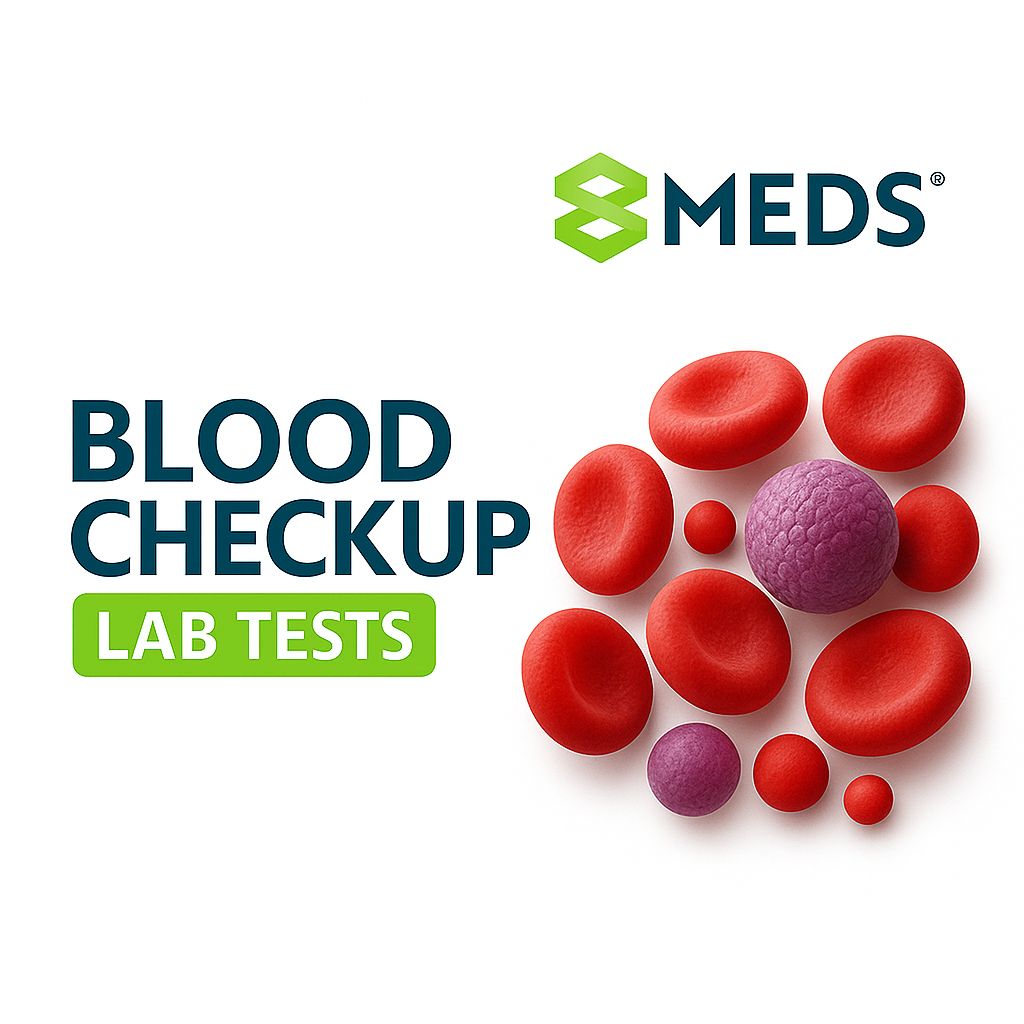
BLOOD STUDIES Lab Tests
Get a complete overview of your health with our Blood Studies Lab Test. This test analyzes key blood components including red and white cells, hemoglobin, and platelets. It helps detect infections, anemia, clotting issues, and other underlying conditions. Essential for routine health checks or when experiencing unexplained symptoms. Fast, reliable results with professional insights for your well-being.
A hemoglobin test is a common blood test that measures the amount of hemoglobin in your blood. Hemoglobin is a protein in red blood cells responsible for carrying oxygen from your lungs to the rest of your body and returning carbon dioxide back to the lungs. 🔬 Why It's Done: Doctors order this test to: Check for anemia (low hemoglobin) Monitor a known blood disorder (e.g. sickle cell, thalassemia) Assess general health as part of a complete blood count (CBC) Check for polycythemia (high hemoglobin) 📉 Normal Hemoglobin Ranges: These values can vary slightly between labs: Group Normal Range (g/dL) Men 13.8 – 17.2 Women 12.1 – 15.1 Children 11.0 – 16.0 Pregnant women 11.0 – 12.0 (lower) 🔻 Low Hemoglobin (Anemia) Causes: Iron deficiency Vitamin B12 or folate deficiency Chronic diseases (kidney, cancer) Blood loss (injury, menstruation) Bone marrow problems 🔺 High Hemoglobin Causes: Dehydration Lung or heart disease Living at high altitudes Smoking Polycythemia vera (a bone marrow disorder) 🧪 How the Test Is Done: A healthcare provider draws a blood sample from your arm. No fasting or special preparation is usually needed (unless part of a broader test panel).
₹1
Fibrinogen is a blood plasma protein that's essential for blood clotting (coagulation). It's also known as Factor I in the coagulation cascade. When you're injured, fibrinogen is converted by thrombin into fibrin, which forms a mesh-like clot to stop bleeding. 🧪 What Is a Fibrinogen Test? A fibrinogen blood test measures the amount of fibrinogen in your blood. It may be ordered as: Functional fibrinogen test (measures clotting ability) Antigenic fibrinogen test (measures fibrinogen concentration) 📊 Normal Fibrinogen Range: Group Normal Range Adults 200 – 400 mg/dL (2.0 – 4.0 g/L) Pregnant women Can be slightly higher (up to ~600 mg/dL) 🔻 Low Fibrinogen (Hypofibrinogenemia): May indicate: Disseminated Intravascular Coagulation (DIC) Liver disease (fibrinogen is made in the liver) Severe malnutrition Fibrinolysis (excessive clot breakdown) Genetic deficiency (rare) 🩸 Risk: Increased bleeding or poor wound healing. 🔺 High Fibrinogen (Hyperfibrinogenemia): Often due to: Inflammation or infection (it's an acute phase reactant) Pregnancy Smoking Obesity Cancer Heart disease risk 💥 High fibrinogen can increase blood clot risk (e.g. heart attack, stroke, DVT). 🩺 When Is the Test Ordered? A doctor might request it to: Investigate unexplained bleeding or clotting Monitor DIC Assess liver function Evaluate inflammation Predict cardiovascular disease risk
₹1
ABSOLUTE BASOPHIL COUNT
Report in 24 HOURS
₹220
ABSOLUTE EOSINOPHIL COUNT
Report in 24 HOURS
₹220
ABSOLUTE LYMPHOCYTE COUNT
Report in 24 HOURS
₹220
ABSOLUTE MONOCYTE COUNT
Report in 24 HOURS
₹220
ABSOLUTE NEUTROPHIL COUNT
Report in 24 HOURS
₹220
ACTIVATED PARTIAL THROMBOPLASTIN TIME ( APTT )
Report in 24 HOURS
₹550
ACTN3 GENOTYPING SPORTS GENE BLOOD
Report in 11 DAYS
₹5500